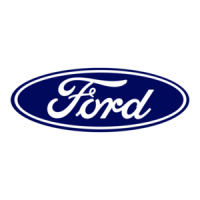
Do you have a question about the Ford wsg-1068 and is the answer not in the manual?
Recommendations for safe operation and handling of equipment and substances.
Explains the importance of engine identification for ordering correct replacement parts.
Details the warranty periods for non-emissions related parts and emission-related parts.
Lists systems and components covered under the general and high-priced emissions warranties.
Essential pre-operation checks and inspections for new engines.
Introduces the various controls used to operate the engine.
Describes the function of safety switches for oil pressure and temperature shutdowns.
Details the operation of the power take-off control handle for engaging and disengaging the clutch.
Explains how to adjust engine speed using the throttle control knob and release button.
Describes the ammeter's function in registering charging and discharging current.
Explains the battery condition indicator as an alternative to the ammeter measuring battery voltage.
Describes the tachometer's role in indicating engine speed in RPM.
Explains the hourmeter's function in recording operating hours for service scheduling.
Details the oil pressure gauge for monitoring lubricating system pressure.
Describes the temperature gauge for monitoring coolant temperatures.
Explains the MIL light's purpose in indicating engine malfunctions.
Describes the charge indicator light as a reminder for the charging system status.
Explains the necessity of pressing the override button for starting when a safety switch is fitted.
Explains the fuel select switch for dual-fuel engines.
Refers to maintenance schedules for initial engine start-up procedures.
Step-by-step guide for starting the engine from a cold state.
Instructions for stopping the engine under normal and abnormal operating conditions.
Guidelines for the initial break-in period of a new or reconditioned engine.
Emphasizes the importance of lubrication and periodic maintenance for engine longevity.
Specifies the correct engine oils and their specifications for optimal performance and protection.
Step-by-step instructions for draining and refilling the engine oil.
Instructions for replacing the engine oil filter, including the recommended part number.
Step-by-step guide for removing, inspecting, and installing spark plugs.
Procedure for inspecting ancillary drive belts for wear or damage.
Instructions for checking and topping up the engine coolant level.
Instructions for replacing the Positive Crankcase Ventilation (PCV) valve.
Details on maintaining the cooling system for proper engine operating temperature.
Information on maintaining the engine's oil circulation system for bearing lubrication.
Details the fuses and circuits protected within the power distribution box.
Description of the generator, its mounting, and charging rate adjustment.
Procedures for preparing the engine for one month of storage.
Steps for long-term engine storage, including preservation.
Notes on system diagnosis and potential causes for engine symptoms.
Lists possible causes for engine issues when operating without load.
Lists general engine type, bore, stroke, and cylinder information.
Details fuel types, specifications, and recommendations for LPG and Natural Gas.
Specifies oil pressure, type, fill capacity, and filter information.
Provides specifications for the generator drive belt length and tension.
Details generator polarity, drive belt tension, and output specifications.
Specifies spark plug type, gap, and firing order.
Lists torque values for various engine components like oil pan plug and spark plugs.